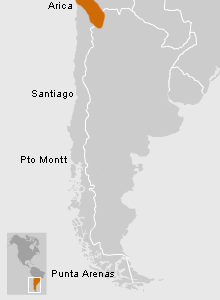The political center of Tiwanaku was in the city of the same name, located on the southern shore of Lake Titicaca in the humid Bolivian Altiplano. This great Andean civilization achieved dominion over a vast territory that included what is now Northern Chile, from the Azapa Valley in the Arica area to the Atacama Slat Flat. Geographically the empire ran from the enormous plains and salt flats of the Bolivian Altiplano to the Pacific coast and valleys of southern Peru and the desert oases of northern Chile.
How to Arrive
El Museo se encuentra ubicado en pleno centro de Santiago, en la esquina de las calles Bandera y Compañía, a una cuadra de la Plaza de Armas.
Tickets
Chileans and resident foreigners: $1,000 Foreigners: $8,000 Chilean students and resident foreigners: $500 Foreign students: $4,000
Guided Visit
El Museo cuenta con un servicio de guías, sin costo adicional, para los establecimientos educacionales.
Information for Teachers
Invitamos especialmente a coordinarse con alguno de nuestros guías para programar una visita o actividades de motivación y seguimiento que aprovechen de la mejor forma la experiencia de visitarnos.
Audioguides
Download recordings of the Permanent Exhibition display texts in English, French, Portuguese and Spanish here. These audioguides are in mp3 format and are arranged by cultural area, following the same order as our exhibit galleries. Descargue desde esta página audioguías en castellano, inglés, francés y portugués con los textos de las vitrinas de la […]






































